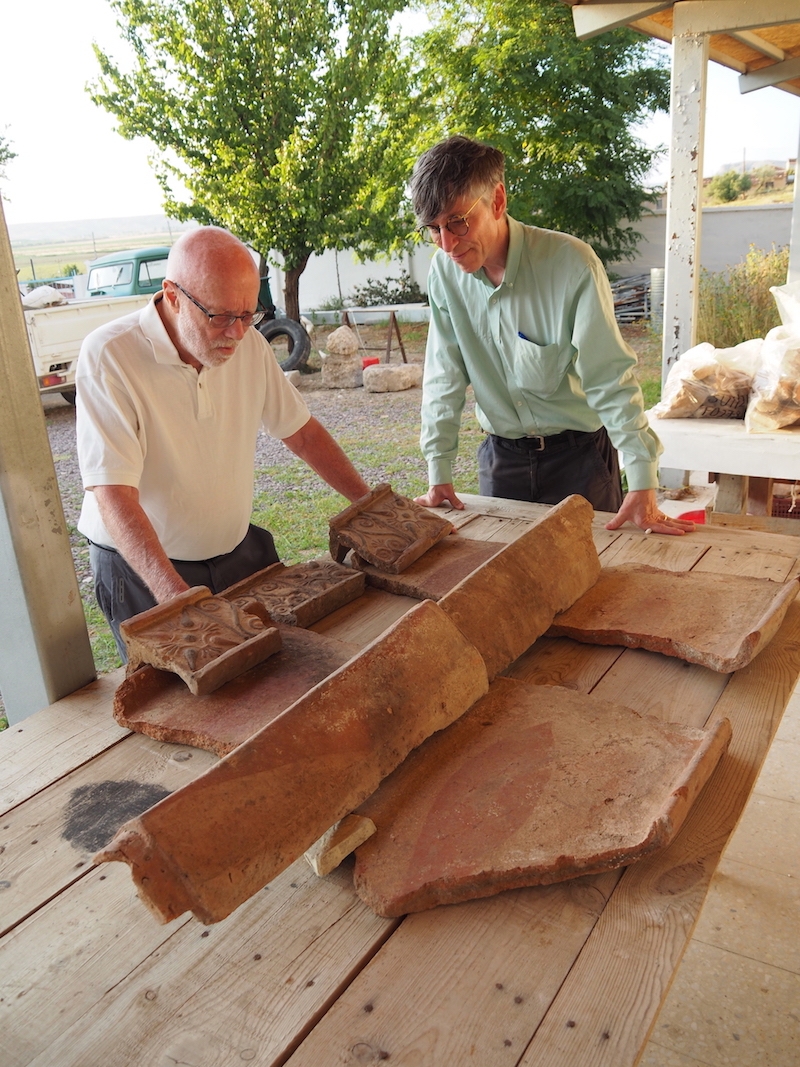Past Events
Interested in Cotsen events? Sign up for our mailing list.Almoatz-bellah Elshahawi, Conservator, Grand Egyptian Museum
Wednesday, November 18th, 12:00pm - 1:00pm PT
Acquired in 1955 by the J. Paul Getty Museum an Egyptian bronze cat was thought to be a fake. Authenticity questions initially arose from the presence of several odd repairs on the cat’s tail. Additionally, the surface appeared stripped and was very glossy giving it an artificial look and contributing to its suspicious appearance. Removal of the bronze from its historic wooden base revealed the signature of a 19th century British restorer. Comparisons of the interior to the exterior bronze surface indicate that the cat had been aggressively cleaned leaving a smooth and atypical corrosion pattern on the surface. A technical study of the cat using visible and microscopic examination, x radiography, metallography, x ray fluorescence spectroscopy and most significantly, thermoluminescence dating of the core material within the head, confirmed the cat’s authenticity.
Register for this Cotsen Virtual Pizza Talk here! You will receive instructions on viewing the talk after registering.
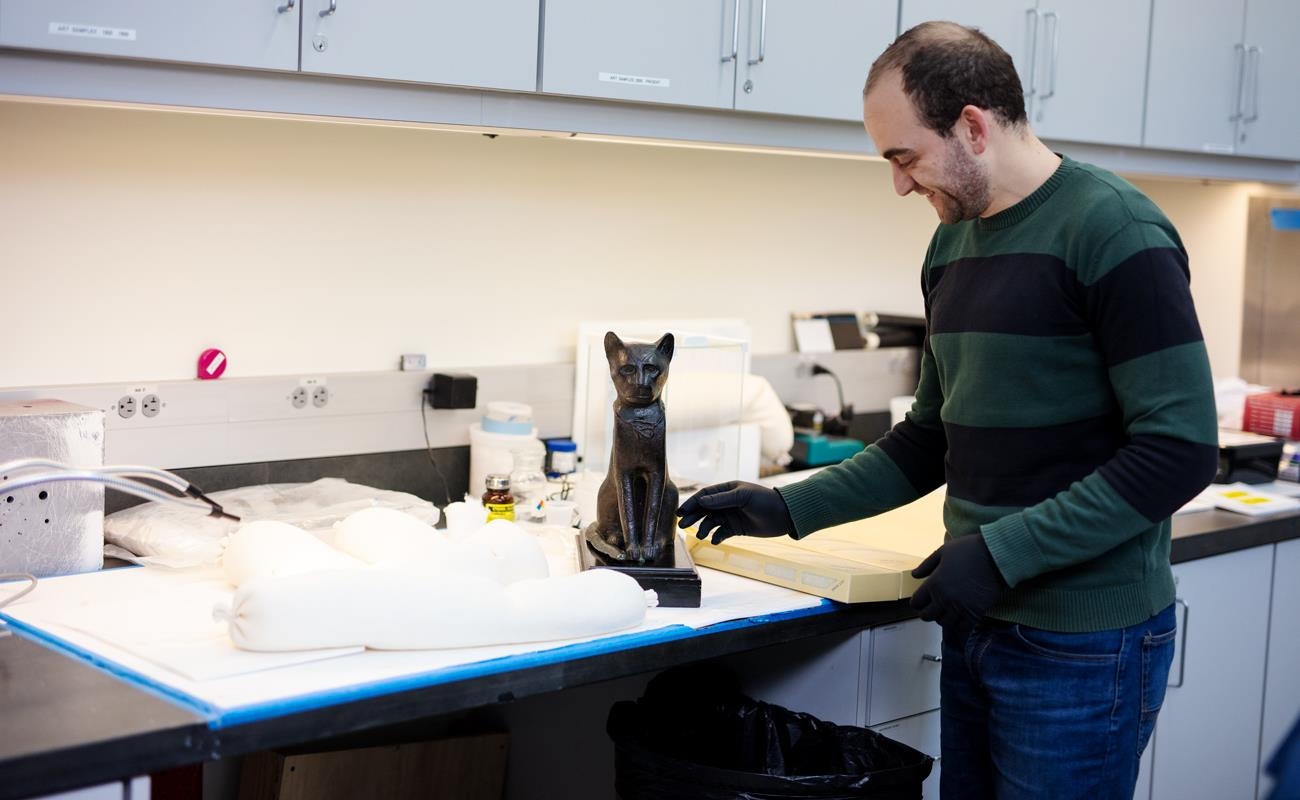
Contact Sumiji Takahashi
Email sutakahashi@ioa.ucla.edu
Phone
Dr. Danielle Candelora, Assistant Professor, History Department, SUNY Courtland
Wednesday, November 4th, 12:00pm - 1:00pm PT
The Hyksos are often set up as the boogeymen of ancient Egypt - after a violent invasion, these foreign despots ruled the North of Egypt with an iron first, while a native Egyptian family in the South fought for Egypt's liberation. However, archaeological investigation and the reanalysis of ancient texts shows that this narrative is simply political rhetoric created by the Egyptian kings to legitimize their own rule. In reality, the Hyksos were creatively strategic about the display of various aspects of their identities. To become fully Egyptian was never the goal; instead they actively maintained and advertised elements of their origins in order to support their ties to kinship and trade networks in West Asia. These kings were cosmopolitan diplomats who corresponded with much of the Near East and Eastern Mediterranean, and whose capital city was a titan of trade. They adopted and adapted elements of traditional Egyptian kingship, but negotiated these traditions with a West Asian spin, creating a rule uniquely suited to the eastern Delta. Further investigation of the social memory of these kings has even demonstrated that they were considered legitimate kings and the major power in Second Intermediate Period Egypt. In fact, the Hyksos and the West Asian immigrants of the period had a massive impact on Egyptian society, culture, and conceptions of kingship. The archetype of New Kingdom Egypt, considered the apex of ancient Egyptian society, would not have been possible without the influence of these West Asian immigrants or the rule of the Hyksos.

Register for this Cotsen Virtual Pizza Talk here! You will receive instructions on viewing the talk after registering.
Contact Sumiji Takahashi
Email sutakahashi@ioa.ucla.edu
Phone
Dr. Christine Lee, Assistant Professor, Department of Anthropology, California State Los Angeles
Wednesday, October 28th, 12:00pm - 1:00pm PT
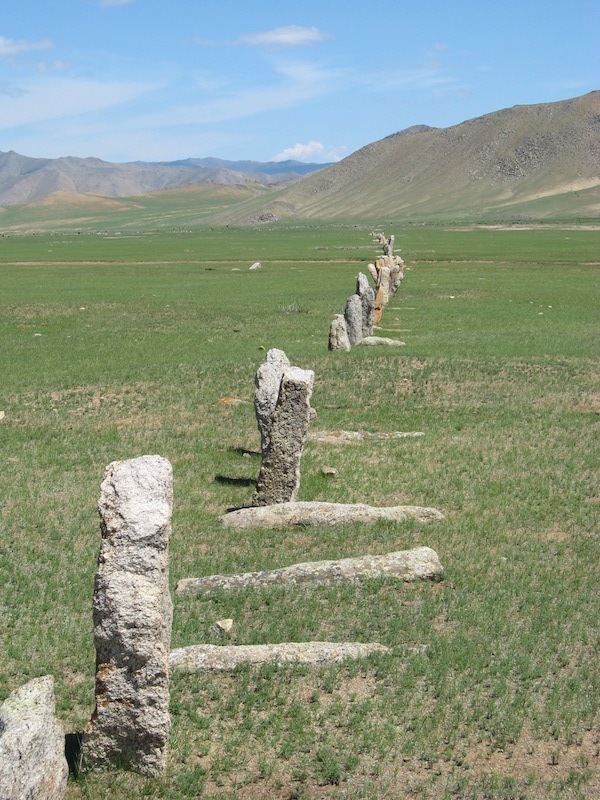 Four archaeological sites along the western frontier of China and Mongolia were analyzed for cranial trauma patterns. These patterns were then used to determine levels of violence, who were the participants, and if certain individuals were singled out as specific targets. In ancient times all of these sites were connected by the Silk Road. The sample from Yingpan (206 BC-420 AD), Yanghai (475 BC-220AD), Nileke (550-221 BC), and Chandman (700-400BC) totaled 275 individuals. Yingpan and Yanghai were agricultural oasis states in the Tarim Basin. Nileke and Chandman were nomadic pastoralists located along the Altai mountains. Trauma was recorded for location on the skull, type (blunt force, sharp force, or high velocity), and cause (interpersonal, warfare, or other). The total population percentages for trauma were Yingpan 27%, Yanghai 23%, Chandman 15%, and Nileke 20%. However, this does not give an accurate picture of the level of daily violence experienced. The likelihood of an individual experiencing a violent episode causing death or disability was highest at Chandman and the lowest at Yingpan. So how a population and it’s individuals were the perpetrators or victims of aggression needs closer examination. One site has an unusual pattern where men, women and children have broken noses. Two sites have evidence of trephination or surgery after devastating sword blows or high velocity projectiles. There is one incidence of scalping. Finally several individual had their noses cut off. This intentional mutilation of the face was a capital punishment at the time. This talk will explore what were the social and cultural factors which could have caused these specific patterns.
Four archaeological sites along the western frontier of China and Mongolia were analyzed for cranial trauma patterns. These patterns were then used to determine levels of violence, who were the participants, and if certain individuals were singled out as specific targets. In ancient times all of these sites were connected by the Silk Road. The sample from Yingpan (206 BC-420 AD), Yanghai (475 BC-220AD), Nileke (550-221 BC), and Chandman (700-400BC) totaled 275 individuals. Yingpan and Yanghai were agricultural oasis states in the Tarim Basin. Nileke and Chandman were nomadic pastoralists located along the Altai mountains. Trauma was recorded for location on the skull, type (blunt force, sharp force, or high velocity), and cause (interpersonal, warfare, or other). The total population percentages for trauma were Yingpan 27%, Yanghai 23%, Chandman 15%, and Nileke 20%. However, this does not give an accurate picture of the level of daily violence experienced. The likelihood of an individual experiencing a violent episode causing death or disability was highest at Chandman and the lowest at Yingpan. So how a population and it’s individuals were the perpetrators or victims of aggression needs closer examination. One site has an unusual pattern where men, women and children have broken noses. Two sites have evidence of trephination or surgery after devastating sword blows or high velocity projectiles. There is one incidence of scalping. Finally several individual had their noses cut off. This intentional mutilation of the face was a capital punishment at the time. This talk will explore what were the social and cultural factors which could have caused these specific patterns.
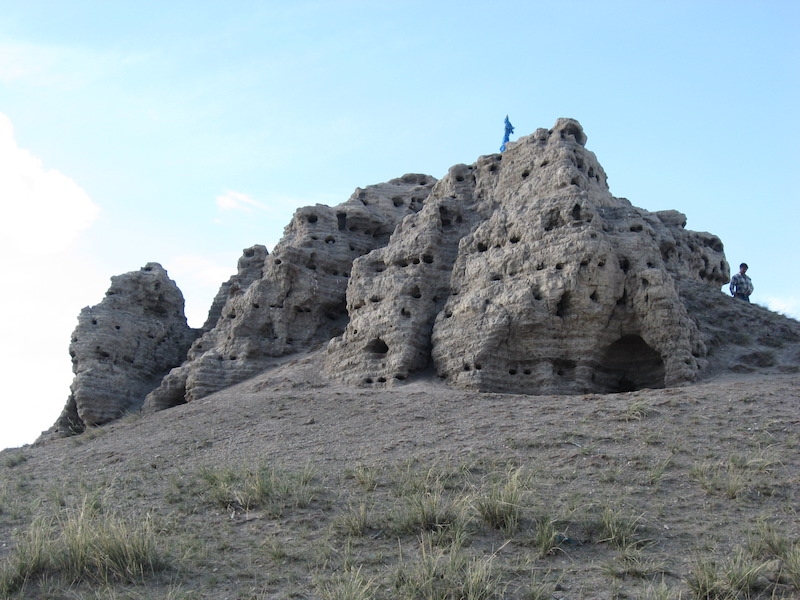
Register for this Cotsen Virtual Pizza Talk here! You will receive instructions on viewing the talk after registering.
Contact Sumiji Takahashi
Email sutakahashi@ioa.ucla.edu
Phone
Dr. Ayana Omilade Flewellen, Assistant Professor, Department of Anthropology, UC Riverside
Wednesday, October 21st, 12:00pm - 1:00pm PT
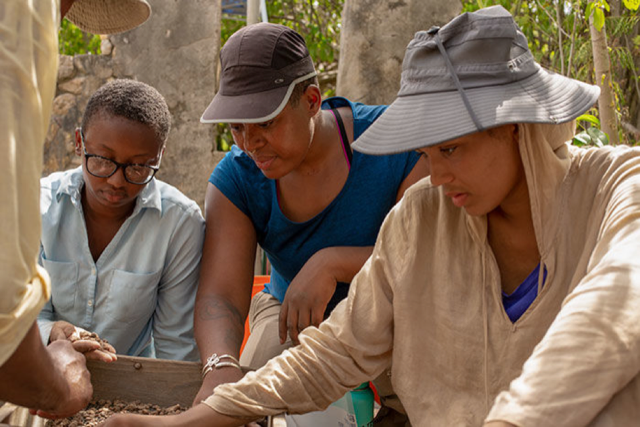 Amid racialized servitude, sexual exploitation, and economic disenfranchisement, that marked the post-emancipation era in the United States, African American women were styling their hair with combs, lacing glass beads around their necks, dyeing coarse-cotton fabric with indigo-berry and sweetgum bark, and fastening buttons to adorn their bodies and dress their social lives. Through an analysis of material culture and documentary data, Dr. Flewellen’s work examines the complex interplay between structural forms of oppression and agency by focusing on the ways African Diasporic women used dress to negotiate racism, sexual exploitation, and exploitive capitalism from slavery through freedom. This talk will outline the flesh and texture of Black Feminist Archaeology, as a theoretical and methodological framework that centers on the lived experiences of enslaved Africans and their descendants as a means for the production of knowledge. Focusing on Dr. Flewellen’s research on gendered African Diasporic sartorial practices, this presentation aims to articulate Black Feminist Archaeology at the interstices of digital humanities, historical archaeology, and Black feminism.
Amid racialized servitude, sexual exploitation, and economic disenfranchisement, that marked the post-emancipation era in the United States, African American women were styling their hair with combs, lacing glass beads around their necks, dyeing coarse-cotton fabric with indigo-berry and sweetgum bark, and fastening buttons to adorn their bodies and dress their social lives. Through an analysis of material culture and documentary data, Dr. Flewellen’s work examines the complex interplay between structural forms of oppression and agency by focusing on the ways African Diasporic women used dress to negotiate racism, sexual exploitation, and exploitive capitalism from slavery through freedom. This talk will outline the flesh and texture of Black Feminist Archaeology, as a theoretical and methodological framework that centers on the lived experiences of enslaved Africans and their descendants as a means for the production of knowledge. Focusing on Dr. Flewellen’s research on gendered African Diasporic sartorial practices, this presentation aims to articulate Black Feminist Archaeology at the interstices of digital humanities, historical archaeology, and Black feminism.
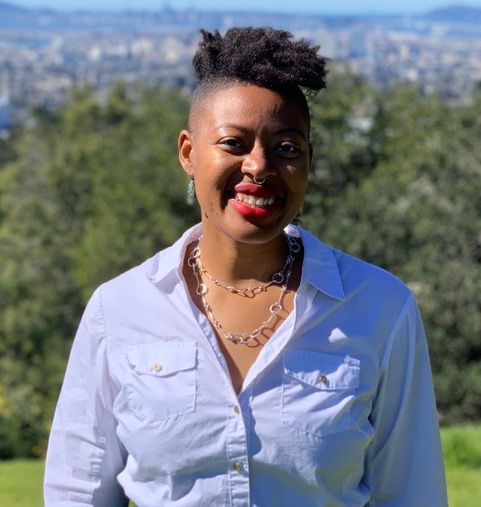
Register for this Cotsen Virtual Pizza Talk here! You will receive instructions on viewing the talk after registering.
Contact Sumiji Takahashi
Email sutakahashi@ioa.ucla.edu
Phone
Sanchita Balachandran, Senior Lecturer in Near Eastern Studies & Associate Director, Johns Hopkins University & Museum
Wednesday, October 14th, 12:00pm - 1:00pm PT
What can we know about the lived experiences of the ancient artisans who were making the now-iconic red and black ceramics in Athens between the 6th and 4th centuries BCE? Given that the potters and painters of Athens comprised a diverse group of practitioners that included Athenian citizens, immigrants and migrant workers, women and children, freed people and enslaved people, can the pots they made tell us about the conditions of their lives? Interdisciplinary approaches incorporating experimental archaeology, sensory experience, conservation documentation and digital imaging techniques may offer us new ways to “excavate” the surfaces of extant ceramics in museums, most of which were collected without archaeological context. This talk looks at how examining ancient ceramics from the perspective of production—from “preparatory” drawings on the surfaces, to the painted images, to the fired colors of the vessels—allows us to approach ancient people at work, in the moment of production, and raises questions about who they really were.

Register for this Cotsen Virtual Pizza Talk here! You will receive instructions on viewing the talk after registering.
Contact Sumiji Takahashi
Email sutakahashi@ioa.ucla.edu
Phone
Dr. C. Brian Rose, Professor of Archaeology & Curator in Charge, Mediterranean Section, University of Pennsylvania & Museum
Wednesday, October 7th, 12:00pm - 1:00pm PT
Drawing on personal experience, this lecture explores the relationship between archaeology and conservation at three sites in Turkey, focusing on both object and architectural conservation. The speaker was co-director at Troy for 25 years (1988-2012), and director of Gordion since 2013.
Register for this Cotsen Virtual Pizza Talk here! You will receive instructions on viewing the talk after registering.
Contact Sumiji Takahashi
Email sutakahashi@ioa.ucla.edu
Phone
Kristine Martirosyan-Olshansky, Postdoctoral Scholar, CIoA, UCLA
Alan Farahani, Assistant Professor of Anthropology, UNLV
September 16, 2020, 1:00pm - 2:00pm PST
Virtual Pizza Talk Series
This talk is a summary of research conducted at the archaeological site of Masis Blur, an early farming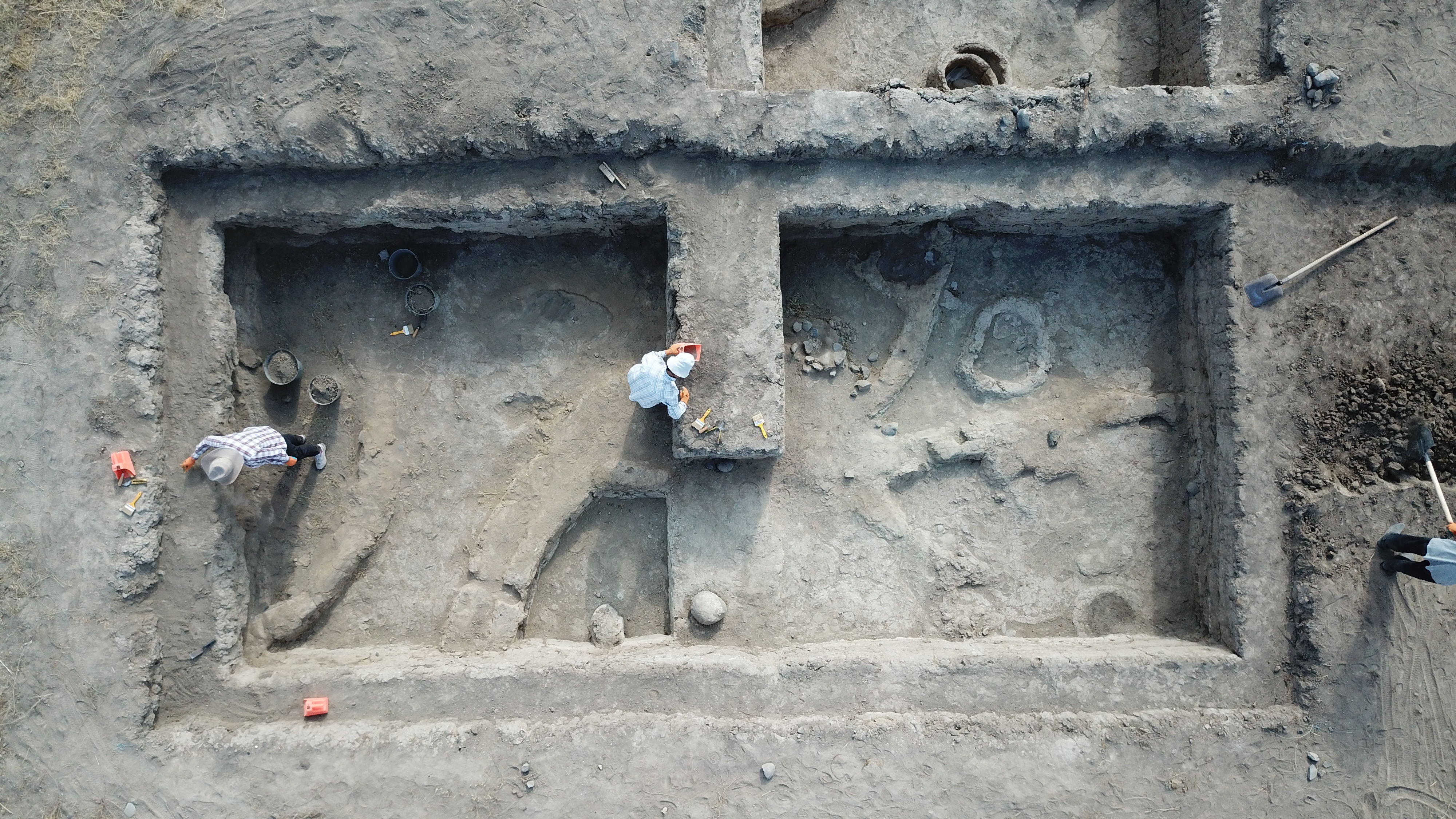
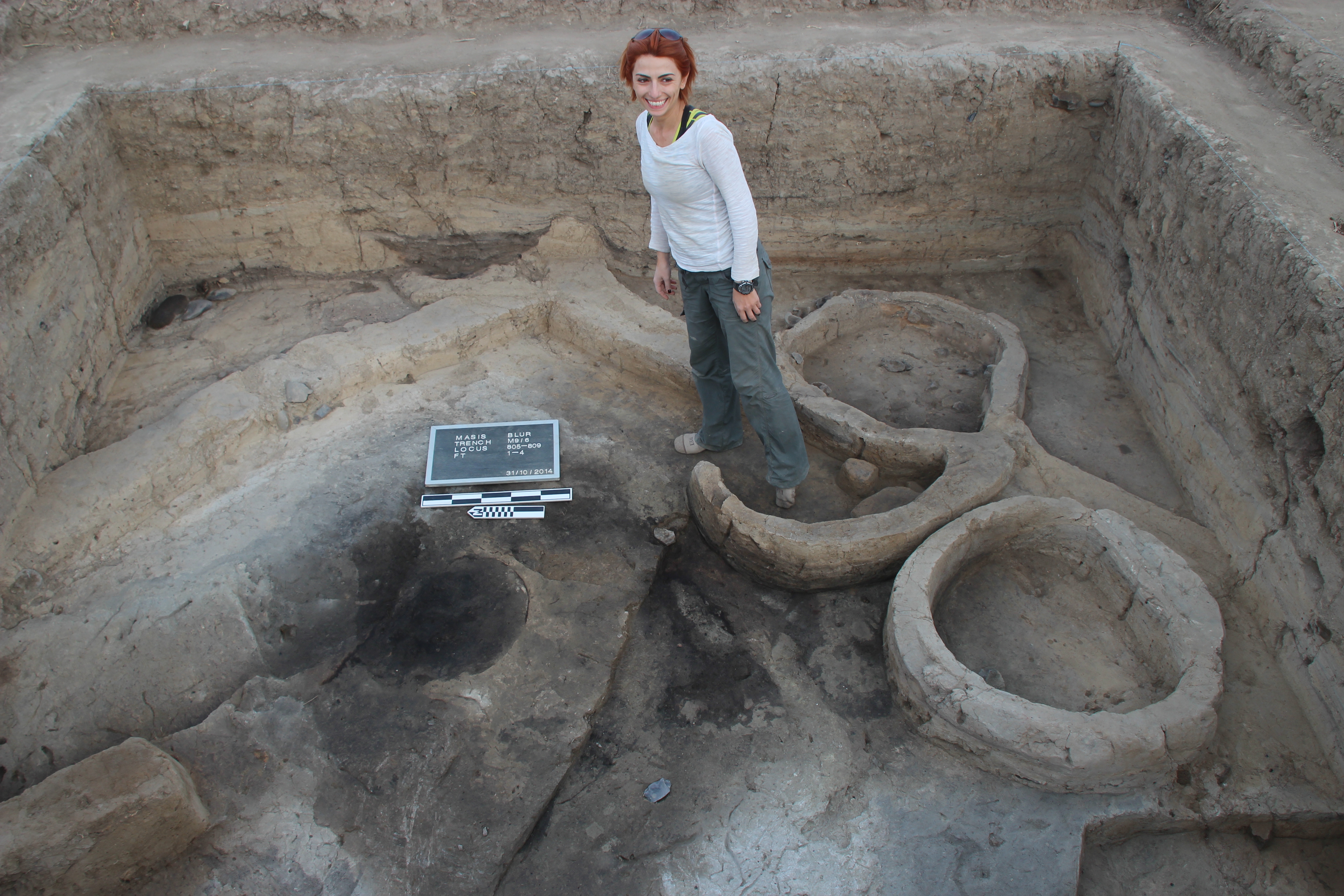
Alan Farahani is an Assistant Professor of Anthropology at the University of Nevada, Las Vegas. He is an anthropological archaeologist whose research focuses on how ancient agriculture was embedded in and influenced the social, political, and cultural practices of people in the past. His methodological expertise is paleoethnobotany, or the analysis of archaeological plant remains, as well as in the use of contemporary computational tools such as Python and R to effectively manage archaeological data. He has conducted fieldwork throughout the world, and has been working on the Masis Blur project since 2018.
Register for this Cotsen Virtual Pizza Talk here! You will receive instructions on viewing the talk after registering.
Contact Michelle Jacobson
Email mjacobson@ioa.ucla.edu
Phone
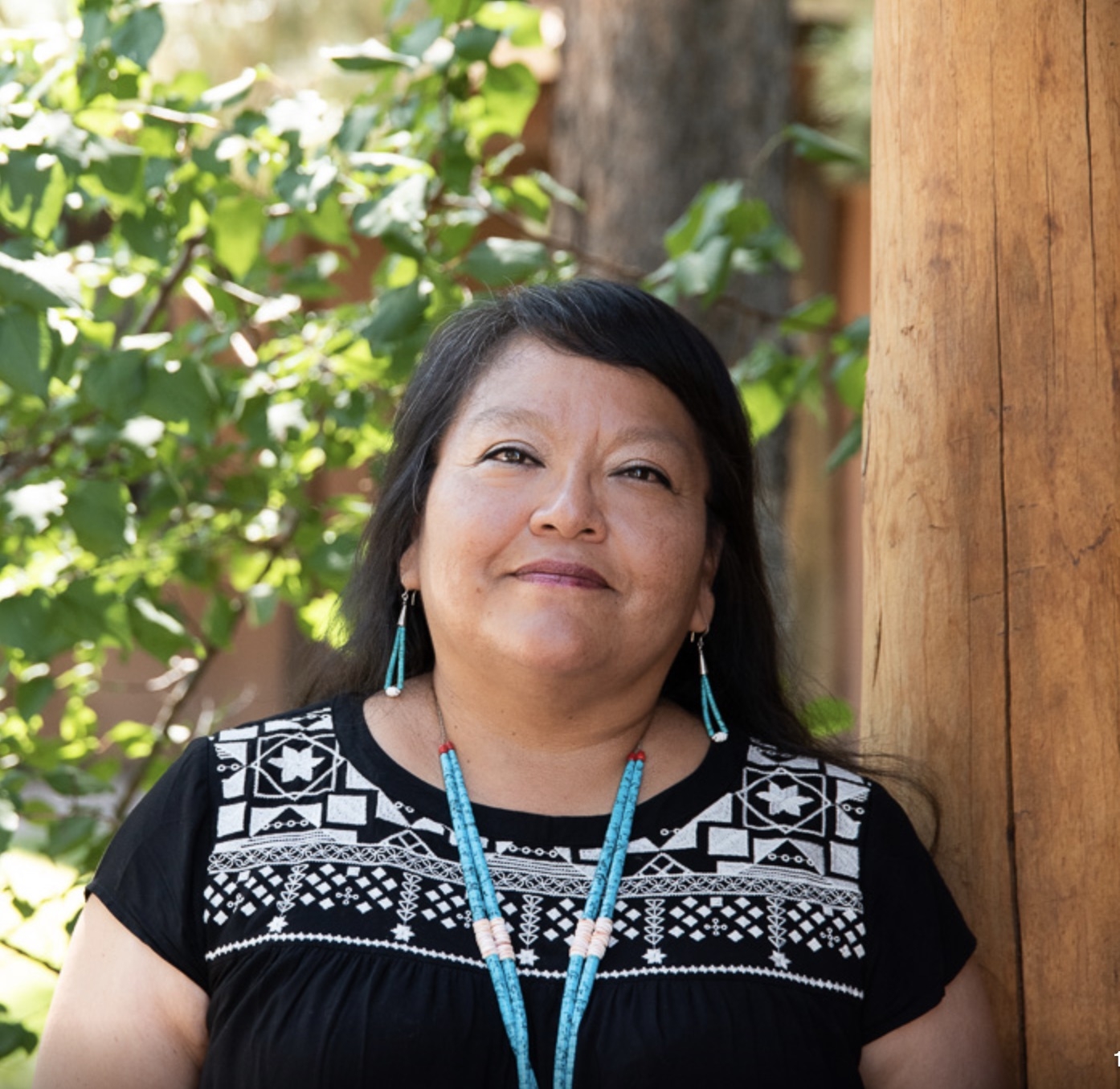 Davina Two Bears' research documents the history of the Old Leupp Boarding School (OLBS), a Federal Indian boarding school on the Navajo Reservation, from 1909 to 1942, as it explores Diné (Navajo) survivance within the context of this school. Two Bears employs decolonizing research methods framed by postcolonial theory to investigate the OLBS, which currently exists as a historic archaeological site. She explores how Diné children forced to attend the OLBS utilized their cultural foundations to meet the challenges imposed upon them by a settler society and relates the positive stories of Native survivance and resistance to assimilation achieved within the OLBS. Utilizing oral history interviews she conducted with Navajo elders and a critical review of archival records and historic photographs, Two Bears explores the history of the OLBS and the memories of Navajo students who attended the OLBS. Her research contributes to postcolonial anthropology as a study of culture change, decolonizing research, and Native American and Indigenous studies.
Davina Two Bears' research documents the history of the Old Leupp Boarding School (OLBS), a Federal Indian boarding school on the Navajo Reservation, from 1909 to 1942, as it explores Diné (Navajo) survivance within the context of this school. Two Bears employs decolonizing research methods framed by postcolonial theory to investigate the OLBS, which currently exists as a historic archaeological site. She explores how Diné children forced to attend the OLBS utilized their cultural foundations to meet the challenges imposed upon them by a settler society and relates the positive stories of Native survivance and resistance to assimilation achieved within the OLBS. Utilizing oral history interviews she conducted with Navajo elders and a critical review of archival records and historic photographs, Two Bears explores the history of the OLBS and the memories of Navajo students who attended the OLBS. Her research contributes to postcolonial anthropology as a study of culture change, decolonizing research, and Native American and Indigenous studies.
Davina R. Two Bears is Navajo from northern Arizona. She recently graduated from Indiana University (2019) with a PhD in anthropology with an emphasis in archaeology, and a PhD minor in Native American Indigenous Studies.
Register for this Cotsen Virtual Pizza Talk here! You will receive instructions on viewing the talk after registering.
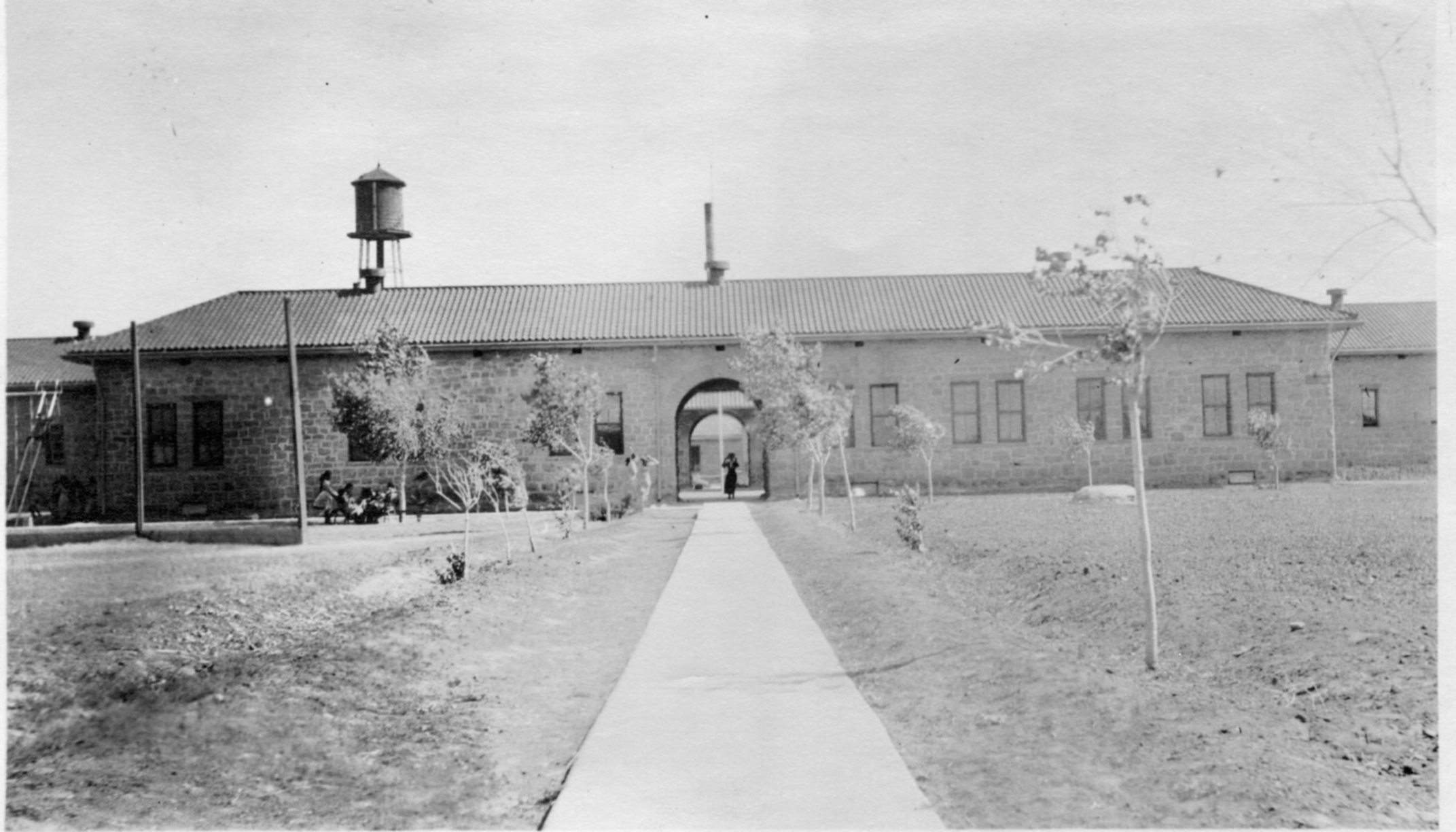
Photo courtesy of the Old Trails Museum/Winslow Historical Society. The photo is of the front entrance of the OLBS, which later became the girls and boys dormitory. This picture was taken around 1915.
Contact Michelle Jacobson
Email mjacobson@ioa.ucla.edu
Phone
Caroline Arbuckle MacCleod, Ph.D. Fellow, University of British Columbia
Wednesday July 22, 2020 – 1:00pm
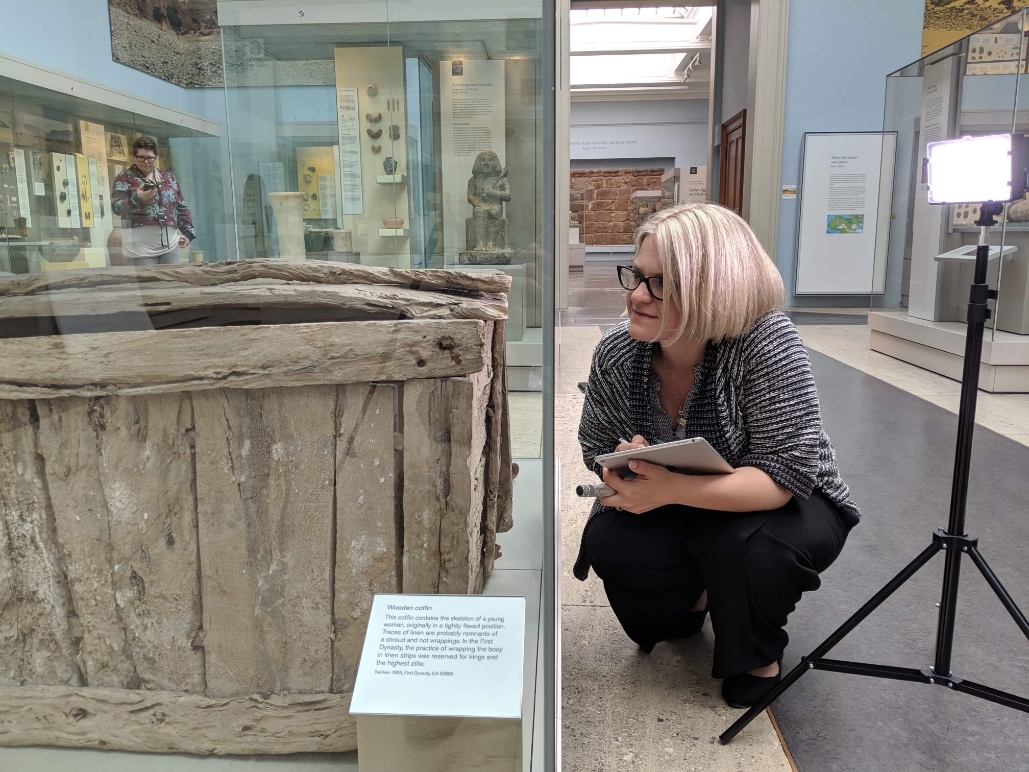 In ancient Egypt, the wooden coffin was considered one of the fundamental elements of a burial for wealthier individuals. It was a magical vessel that protected the deceased, and ensured that the owner could be transformed into a divine being in the afterlife. Due to the importance of these objects, potent magical talismans and symbols were placed around and in the coffin, and were often included in the decoration. Magical spells and rituals were also performed throughout the burial ceremony. In this talk, a new layer of ritual and magic is considered, hidden within the invisible joints of wooden coffins. In these areas, secret spells and magical red paint were added during construction. This may suggest the presence of educated carpenter priests, trained in the rituals needed to prepare the wood, as the first step in the creation of these potent vessels for the dead.
In ancient Egypt, the wooden coffin was considered one of the fundamental elements of a burial for wealthier individuals. It was a magical vessel that protected the deceased, and ensured that the owner could be transformed into a divine being in the afterlife. Due to the importance of these objects, potent magical talismans and symbols were placed around and in the coffin, and were often included in the decoration. Magical spells and rituals were also performed throughout the burial ceremony. In this talk, a new layer of ritual and magic is considered, hidden within the invisible joints of wooden coffins. In these areas, secret spells and magical red paint were added during construction. This may suggest the presence of educated carpenter priests, trained in the rituals needed to prepare the wood, as the first step in the creation of these potent vessels for the dead.
Please note, the talks will start at 1:00pm PT during the summer.
Contact Michelle Jacobson
Email mjacobson@ioa.ucla.edu
Phone
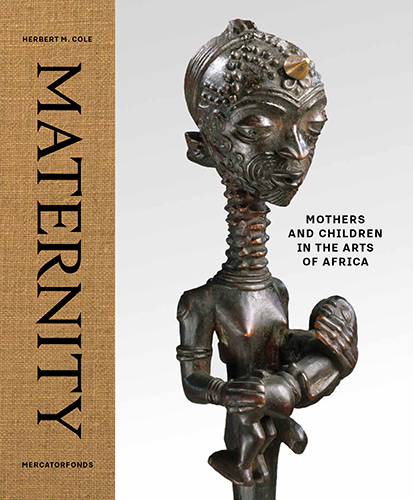 SPEAKER:
SPEAKER:
Dr. Herbert Cole
University of California, Santa Barbara
Professor Emeritus, Art History
In writing my latest (and probably last) book: Maternity: Mothers and Children in the Arts of Africa, two stereotypes emerged that I ran into more or less often as I researched the topic, and these ended up as "pet peeves" that I felt the need to address in my text: "fertility goddess" as a descriptor of Africn images of mothers with children, especially those shown suckling, and the word "doll" as applied to images of children used by many potential mother to help them conceive, or if pregnant, to make sure the pregnancy goes well and a healthy, handsome child is born. I will explore both of these stereotypes and show that both are ultimately racist words when applied to maternity and child images.
Suggested reading for the talk available here.
Register for this Cotsen Virtual Pizza Talk here! You will receive instructions on viewing the talk after registering.
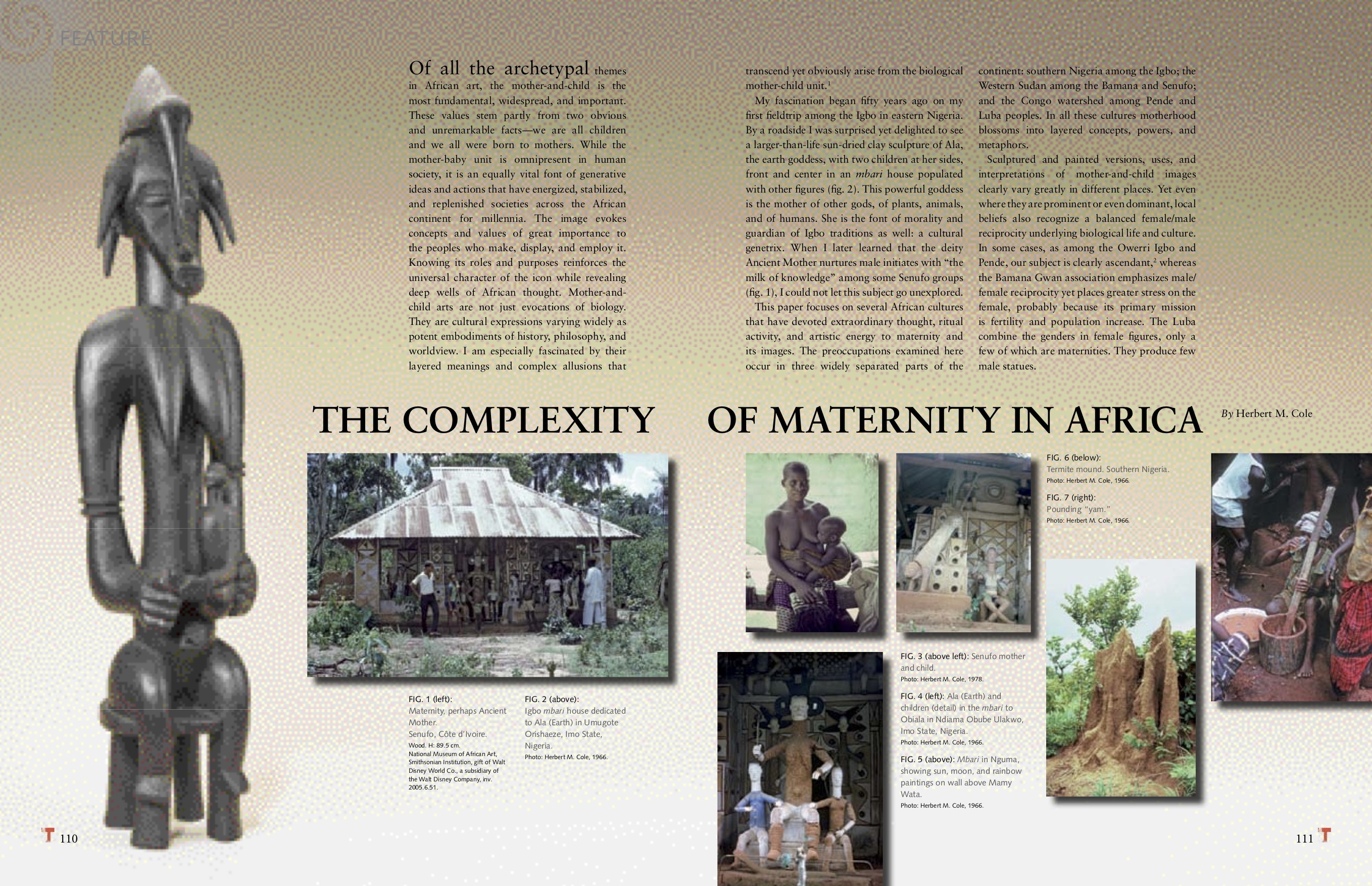
Contact Michelle Jacobson
Email mjacobson@ioa.ucla.edu
Phone
- ‹ previous
- 8 of 21
- next ›



